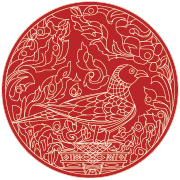I made this map as a special project for a company to analyze the access to healthy corner store in Philadelphia by census tract.
Workflow and Symbolization Justification
The first stage of map construction involved gathering relevant data from the US Census Bureau site. With population data being the only demographic data that was needed, I was able to obtained the pre-joined TIGER/Line with Selected Demographic and Economic Data. This circumvented steps required for processing the raw CSV files and manually joining it with the corresponding TIGER/Line shapefiles. The gathered data is imported into ArcGIS Pro for processing and manipulation. Health Corner Store points were spatially joined with the census tract demographic layer to produce a store count field. For the purpose of identifying over and under-served census tracts, square mile density values were calculated for both the store count and population data to normalize the data.
Abstract bivariate symbology was designed and then applied to the map. Store density and Population Density values were correlated using a 3*3 bivariate symbology scheme, where the x-axis denotes the population density, the y-axis denotes the store density. Population density breaks were chosen at 15000 and 30000 people per square mile. Store density breaks were chosen at 10 and 30 stores per square mile. Values were simplified to a High to Low range to highlight the visualized topic (over and under-served tracts) rather than the raw data itself. Over and under-served tracts were symbolized by colors diverging from the z-axis, where greens indicate overserved tracts with high store density but low population density and purples indicate underserved tracts with low store density but high population density. Tracts with corresponding level of density (high-to-high and low-to-low densities) were identified as being already appropriately served and were symbolized using an identical grey hue. This further highlights the specific over and under-served tracts within the map. Store points were overlaid to provide visual reference. Hash fills were likewise added to help visually identify tracts with no healthy corner stores.
Discussions
To most people, census tract is not a recognized boundary unit, where boundaries are not fully representative for all relevant real-world criteria. Thus, using it as the unit of analysis may produce false positives and/or inaccurate visualization. Additionally, since census tracts often cut along roads, it correspondingly cuts the examined data. In our case, it is logical to assume that there are corner stores that are on either side of the boundaries and are thus subsequently excluded from the adjacent tract. Although the symbolization method used is efficient for identifying the top ends of the diverging data, representation of values along the median (z-axis) is relatively weaker. Additionally, major highway overlay would likely add additionally visual reference for the map reader.

